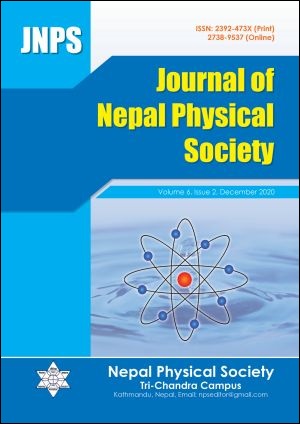Investigation on Parameters of Atmospheric Pressure Plasma Jet by Electrical and Optical Methods
DOI:
https://doi.org/10.3126/jnphyssoc.v6i2.34857Keywords:
Atmospheric pressure plasma jet, Electron temperature, Electron density, Energy dissipation, Electrical characterization, Optical characterizationAbstract
The atmospheric pressure plasma jet works under atmospheric pressure condition, has been developed for surface treatment and biomedical applications. The produced jet has been characterized by electrical and optical methods. To characterize cold atmospheric argon plasma discharge, its electron density, and electron energy (temperature) at various conditions have been estimated by using different techniques such as power balance, stark broadening, and intensity ratio methods respectively. Atmospheric pressure plasma jet (APPJ) has drawn much attention all over the world due to its applications in material processing, biomedical material processing, and thin film deposition. APPJ has been produced, using a high voltage and high frequency power supply (0-20 kV) and an operating frequency of 20 kHz. Results showed that the electron density was of the order of 1014 cm-3 and 1016 cm-3 as determined by power balance, intensity ratio, and stark broadening methods respectively while electron temperature was estimated to be about 0.46 eV and 0.53 eV at 3 kV and 4 kV respectively by using intensity ratio method. The energy dissipation per cycle of the discharge was also estimated by using the Lissajous figure method. Our results confirmed that the parameter such as electron temperature and density depend on the applied voltage, gas flow rate, and electrode distance as well.
Downloads
Downloads
Published
How to Cite
Issue
Section
License
All right reserved. No part of this Journal may be reproduced in any form or by any electronic or mechanical means, including information storage and retrieval system, without permission in writing from the publisher, except by a reviewer who may quote brief passage in a review. The views and interpretation in this journal are those of author(s) and they are not attributable to the NPS.




